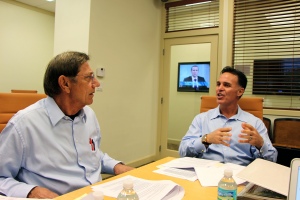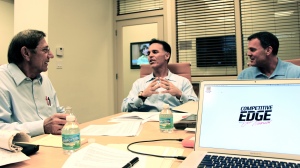Competitive Edge TV™ LLC and O2 Media™ Inc. are proud to announce that Bishop Fleet Optimization LLC will be featured in an upcoming episode of The Competitive Edge with Joe Namath™ slated to air in the 4th Quarter of 2013.
BISHOP Fleet Optimization (BFO) is a multi-national fleet consulting firm that has pioneered the use of 5-week GPS audits to optimize the number of vehicles in fleets, using the company’s own GPS tracking device system.
Derrick Bishop, Managing Director of Bishop Fleet Optimization, will join The Competitive Edge with Joe Namath™ in the upcoming episode entitled “Advances in Fleet Optimization Technology and Applications” to educate viewers on the latest audit techniques. The segment will explore how BFO has helped Government departments and other organizations save millions of dollars through its innovative GPS-based fleet optimization strategy that helps eliminate surplus fleet vehicles and uncovers transport related operational inefficiencies.
Bishop Fleet Optimization has built thousands of GPS units specifically designed to support its fleet consulting business. The proprietary rapid-deploy GPS units lock into the vehicle lighter socket to gather the 5-week data snapshot. “A 5-week GPS-based fleet utilization snapshot is all that most organizations need to understand where inefficiencies exist and to quantify the problems to promote organizational change,” explains Bishop. “The innovation cuts waste not services making it a popular choice for managers. Additionally, organizations typically make $1,000,000 for every $50,000 spent which creates a welcome funding source to improve cash flow, retire debt or revitalize ‘green’ fleet initiatives that often struggle to find cash.”
“We’re looking forward to having Bishop Fleet Optimization on the show to tell us more in-depth information about their successful innovative 5-week GPS audits which provide a viable solution to help fleet managers,” said Jack Swartz, Senior Producer, The Competitive Edge with Joe Namath™.
Additional information on Bishop Fleet Optimization can be found at www.bishopfleet.com.
About The Competitive Edge with Joe Namath™
The Competitive Edge with Joe Namath™ gives straightforward information in a news-oriented format that viewers can utilize and tailor to their own individual and business needs. By talking directly to leaders and influencers in business, The Competitive Edge™ shows viewers how their business can achieve and sustain success.
For more information, please contact:
(954) 935-1344
Jack Schwartz, Senior Producer, ext. 285
James Crosby, Producer, ext. 226
Brenda Mabbitt, Production Coordinator, ext. 142
About O2 Media™
O2 Media™ is an award-winning full-service integrated media and production company specializing in launching brand names out into the world through compelling storytelling and two-way conversations. Our team of Production, Marketing and Technology experts generate buzz and brand awareness for our customers and content partners with a fully integrated media solutions mix using our four Branded Entertainment TV shows, Direct Response, Print and Online Marketing channels.
###







